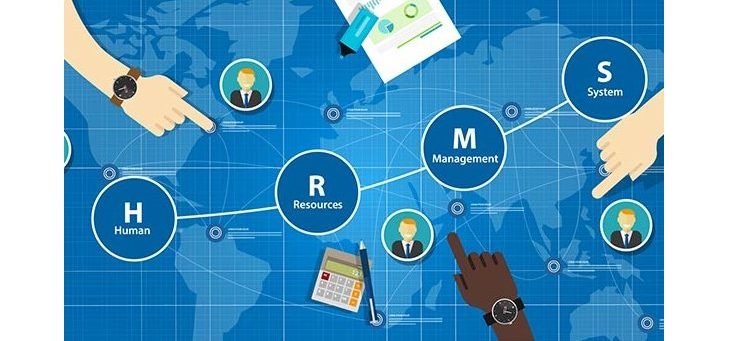Human Resource Management System (HRMS)
Human Resource Management System (HRMS) refers to a suite of software that organizations use to manage internal HR functions. From employee data management to payroll, recruitment, benefits, training, talent management, employee engagement, and employee attendance, HRMS software helps HR professionals manage the modern workforce. Also called a Human Resource Information System (HRIS), HRMS systems put information about a company’s most valuable assets in front of the people who need them. Yesterday’s HR software and HRIS systems have become today’s Human Capital Management Cloud Service.
1. What’s the difference between HRMS, HRIS, & HCM?
Human Resource Information System (HRIS)
HRIS is a software used for the data tracking, data entry, and data management of all HR related operations of an organisation, and helps translate this data into useful insights.
Human Capital Management (HCM)
HCM is a function that is focused on maximising employee performance in line with the company’s strategic objectives through workforce acquisition, management and optimization. The software used to achieve this is called a HCM software or HCM System.
Human Resource Management System (HRMS)
HRMS while not much different from an HRIS is the intersection between a HRIS and an HCM system. It merges the process of a HCM system with the information technology to ensure the workforce and organisation runs efficiently, productively and accurately.
2. What are the types of HRMS software?
The different types of HRMS software include:
- Recruiting or Applicant Tracking System
- Core HR
- Compensation & Benefit Management
- Leave/Absence Management
- Training & Development
- Workflow Management
- Employee Self-Service
- Reporting
- Payroll
- Time & Labour Management
3. What are some typical modules HRMS offer?
These are the 5 typical HRMS modules:
- Talent Acquisition [Workforce Planning, Recruitment, Onboarding]
- Workforce Management [Core HR, Time & Attendance, HR Workflows, Helpdesk]
- Payroll & Expenses [Payroll Management, Travel & Expenses]
- Talent Management [Vibe, Rewards & Recognition, Performance Management]
- People Analytics [Custom Report Builder, Visual Analytics, Talent OneView]
4. What are some common feature hrms provide?
Some of the most common HRMS features include:
- Core HR
- Recruitment
- Onboarding
- Performance Management
- Benefits administration
- Payroll Management
- Workforce Management
- Time and Attendance
- Absence and Leave Management
- Learning and Development
- Talent Management
- HR Analytics
5. What are the benefits of having an hrms software?
Some of the benefits of using an HRMS are:
- Ability to go digital and completely paperless
- The ability to make timely decisions and automate certain tasks, improves overall efficiency
- An HRMS can significantly help reduce overall cycle time for a gamut of tasks
- Increases the ease of performance management by allowing you to set and track KPI’s, manage, and appraise your employees on the system
- Analytics and easy access to data also helps improve decision making capabilities and identify areas of improvement
6. What are the types of HRMS deployment?
There are three types of HRMS deployment:
- Cloud: Where the system and the data are hosted on a third party server.
- On-Premise: Where the system is installed and set up on the company’s own hardware and servers.
- Hosted: This is similar to On-Premise with the only difference being that the company pays a third-party servers to keep their data.
7. What are the importance of human resource management?
Human Resource Management is a function that acts as the backbone of any organisation. It acts as the medium between the employees and management of the organisation and helps align the workforce to the business goals of the organisation. Some of the reasons Human resource management are important are:
- Help in finding and keeping the best talent
- Help in designing recruitment and training processes
- Help in establishing a professional working environment
- Help in handling disputes
- Help in entire workforce management process
- Help in preserving smooth working relationships
- Help in enhancing teamwork
- Help in handling payroll
8. What are the emerging trends in HRMS?
Some emerging trends for HRMS in 2020 are:
- Artificial Intelligence and Automation
- People Analytics
- Intuitive UX and overall ease of use of the system
- Continuous Performance Management
- Greater integration capabilities
- Touchless Attendance and Shift management
- Remote working technologies







